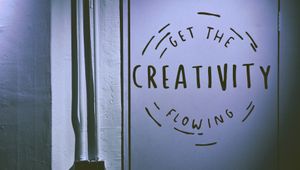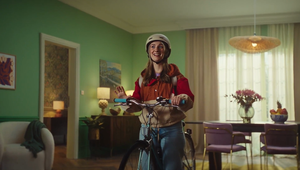
How to Be Creative in Times of Crisis

Creatives are operating in crisis culture. Recession-era budget cuts mean leaner teams doing much heavier lifting. Global tragedies weigh heavily. Even the most passionate creators can find themselves dulled, deadened and beaten by Zoom fatigue, burnout, or the creeping fear that what they’re making doesn’t actually matter one jot.
There’s a long-standing (and painfully toxic) myth in the creative industries that pressure makes diamonds. But in reality, what pressure often creates is paralysis. Neuroscience backs this up. Chronic stress reduces the brain’s capacity for divergent thinking, diminishes cognitive flexibility, and limits our ability to take creative risks. Creativity, it turns out, thrives in safety, not in survival mode.
The world demands more innovation, more relevance, more content, yet it delivers fewer resources, more constraints, and, in the current climate, a not so subtle hint of existential dread. So how do creatives stay creative in times of high stress? And how do leaders, tasked with both delivery and direction, nurture and protect creative energy when the proverbial well runs dry?
Here are some considerations to take in order to safeguard creativity in crisis times:
Fuelling the creative fire
Creative energy is often described as a spark. But a spark needs oxygen. It needs kindling. And, crucially, it needs protection from the winds that threaten to snuff it out. For individuals, this means learning to separate output from identity. A barren spell doesn’t make you any less of an artist, despite how it may feel. A moment of rest isn’t failure, it’s fieldwork. Prioritising mental health, setting strict boundaries with clients, reclaiming unstructured time, and even embracing 'boredom' can become radical acts of resistance, in a culture that is generally about hustle and graft. Creative rituals matter more than grind. Space to play is not frivolous, it’s fuel.
Some creatives turn to personal routines. Morning newspapers (or more likely news scroll), photography walks, digital detox weekends, journaling, or making things just for the sake of making them with no intention for them ever to be monetised. These are reclamations of voice in a world that often demands your silence, unless it can sell it.
The process matters as much as the product
Leadership in a moment of crisis is not just about steering the ship, it’s about protecting and shielding the people on board.
That starts with acknowledging the moment. Far too many companies default to the standard toxic positivity in the face of adversity. But in reality, pretending that everything is fine only invalidates your team’s reality and their genuine concerns. Leaders must give permission. Permission to feel, to pause, and to not be at 100% all of the time.
The best creative leadership recognises that process matters as much as product. Protecting creative energy often means rethinking timelines, questioning urgency, pushing back, asking questions and championing sustainable pace. It means separating ego from feedback and encouraging experimentation without fear. It means hiring for emotional intelligence, not just output. And it means embracing vulnerability and showing your team that not knowing is not weakness, but openness.
Culture and community is critical
In a crisis, isolation can be unbelievably corrosive. That’s why community becomes so important. Creative communities, whether physical, digital, or hybrid, offer validation, opportunities for collaboration, and a shared resilience.
Think of the surge in collective art during the early pandemic. We saw a huge boom in zines, livestream concerts, and virtual gallery shows. Think also of how mutual aid networks inspired entire genres of storytelling about care and collectivity. Or how fan cultures rallied around indie creators to fund their passion projects when industry pipelines dried up. It was real community in action.
These are all reminders that creativity always finds a way, especially when we do it together. Creative leaders can foster this sense of community by investing in mentorship, peer support groups, and collaborative time that’s not just tied to deliverables. It’s important to remember that not everything needs to scale. Sometimes what teams need most is a safe room with sticky notes, snacks, and no fixed agenda.
Look to the future with creative integrity
The world doesn’t stop needing creative work during a crisis. In fact, it often needs it more than ever. But it has to be the right kind of creative work.
A world in crisis needs work that doesn’t exploit trauma, that doesn’t flatten complex stories into slogans and soundbites. The work has to hold space for nuance and importantly, humanity.
That takes a different kind of energy. A quieter, more intentional kind. And it requires that we protect it. Creativity is a way of seeing the world, and of making meaning in the chaos. And that’s never been more important.
So shield and protect your spark. Light others’ torches when you can. And remember, even in the darkest times, we are still the storytellers.















